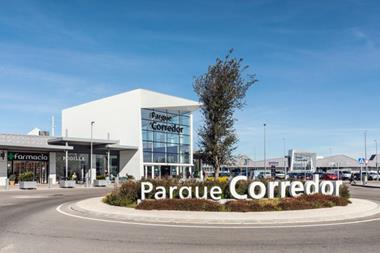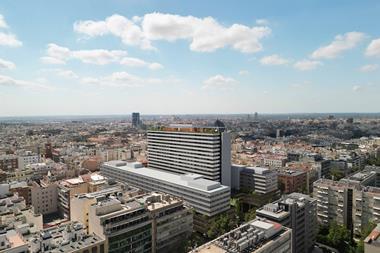The European economy is not out of the doldrums yet, but experts point to signs of tempered optimism in the real estate industry.
The European economy is not out of the doldrums yet, but experts point to signs of tempered optimism in the real estate industry.
This year's Emerging Trends report published by ULI and PwC is entitled ‘Optimism Returns’, based on a growing sense that businesses are adapting to the ‘new normal’.
‘The title of this year's Annual Outlook suggests that investors should put risk back into perspective,’ according to Hans Vrensen, global head of research at adviser DTZ. ‘It looks like the worst-case scenario which many investors expected is not going to happen. Both occupiers and investors have been overly conservative and risk-averse these past few years. But in retrospect it looks like the highest probability of a worst-case scenario was 20% and not 100% -- which led much of the market to overreact and become virtually completely risk-averse.’
Pricing is also becoming more attractive, he noted, with property yields continuing to bear up well vis-à-vis government bond yields in core European markets. ‘There is a more constructive environment and signs that companies will actually invest or sign leases.’
Google’s decision to develop a 1 million square feet new corporate campus at King’s Cross in London is a case in point, he added. ‘This further supports our case for renewed optimism.’
Total European investment volumes came to between €110 bn and €130 bn in 2012, according to the leading advisers. And although total European investment volumes in 2013 are expected to remain flat, prospects for non-prime properties are improving, Vrensen added.‘The outlook for non-prime is less negative than it was. This provides investors with a positively attractive opportunity.’
In its Annual Outlook for the year ahead, DTZ points out that many non-core investors who have raised capital have been increasingly frustrated with the lack of distressed opportunities. As a result, lower quality properties are expected to be the next logical step for them to realise excess returns. ‘From a cash flow perspective, we expect no widespread tenant defaults or increasing vacancy rates, as new supply will remain limited. In addition, we suspect occupiers will remain cautious on expansion and focus on cost savings. Many occupiers are opting to stay put and renegotiate existing leases at their existing buildings. This means that property cash flows, especially for non-prime properties, are likely to be more stable than feared by many.’
Prospects for non-prime properties are best for the UK and core European countries with the most stable economies, added Nigel Almond, head of strategy research at DTZ. 'In the UK in particular, according to our research based on actual transactions the gap between prime and secondary properties is now starting to narrow. Secondary yields have moved in from 14.8% to 14.6%, shrinking the gap with prime to 8.1 percentage points from a peak of 8.3 in Q3.'
This represented the highest gap on record since 1997, Almond added: ‘As investors struggle to source core opportunities they are now starting to move up the risk curve towards better quality secondary product.'
Meanwhile the real estate lending landscape continues to evolve, Vrensen said. While the gross funding gap is a staggering €140 bn, alternative non-bank lenders are gaining ground while a growing number of private as well as listed property companies are turning to relatively inexpensive corporate bond issuances, Vrensen pointed out.
‘The growth of non-bank lending is occurring quicker than we originally anticipated and the trend is growing - every week we see new examples of parties that we have not heard of before in this segment of the market.’
Recently Wells Fargo, the biggest mortgage lender in the US, announced it planned to enter the UK commercial real estate and that it was targeting a £1 bn portfolio. However, DTZ estimates non-bank lenders will have additional lending capacity of €80 bn to shrink this to a net debt funding gap of €58 bn.
Vrensen: ‘The evidence keeps stacking up that the European commercial property lending landscape is undergoing a structural change. We suspect that there must still be more and other parties, that we’re not yet hearing about. Based on our discussions with clients regarding our Global Outlook, we are starting to anticipate that there may be more upside than most had expected. Also, that it could be a quicker and sharper recovery than expected if we snap out of the lingering risk aversion sentiment.’
A key challenge facing the market, however, is the scarcity of quality stock, he added. ‘There’s a great wall of money and lots of capital but not yet enough suitably priced stock.’
Click on the pdf below for our roundup of key points from the Emerging Trends report










